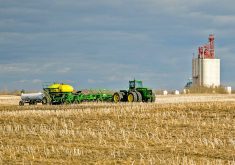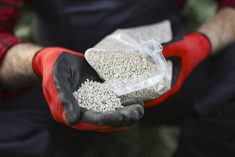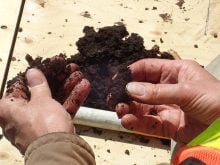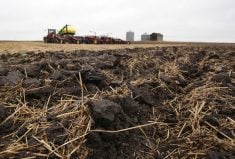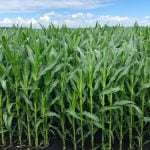Fertilizer is in short supply in Western Canada this spring because of poor rail service and a breakdown at an Alberta nitrogen plant, says Keystone Agricultural Producers (KAP) president Doug Chorney.
“The real thing you’ve got to do here is make sure you have your fertilizer in place and make arrangements with your dealer as soon as possible,” Chorney told KAP delegates at their spring general council meeting April 11.
There are unconfirmed reports of some retailers returning farmers’ payments for pre-purchased fertilizer they haven’t been able to provide, he said.
Read Also

Canadian hemp stable, but stuck on growth
Canada’s hemp industry hopes hybrid varieties, better yields, clearer regulations and new markets can help the crop break past its ceiling and get Canadian farmers planting more hemp acres.
The same poor rail service behind the 70,000-car backlog in grain shipments has also delayed fertilizer shipments.
“We’ve been scrambling to utilize trucks and I think we’ve managed to do that to a large extent, except for some of the large international shipments,” Agrium spokesman Richard Downey said last week.
However, the failure of an auxilliary boiler at Agrium’s nitrogen-manufacturing plant at Carseland, Alta., March 22, will mean 120,000 fewer tonnes of urea on the market.
“But just to put it into perspective… that’s about three per cent of western Canadian nitrogen use,” Downey said. “But every little bit counts in the spring season. The one nice thing about nitrogen is you can top apply a little bit during the growing season.”
Chorney said some farmers were unable to take delivery of their fertilizer because their storage was full of undelivered grain. They have had to pay suppliers to store the fertilizer.
Minto farmer Bill Campbell told the meeting fertilizer supplies and rising prices are a concern in southwestern Manitoba.
“I guess I’m more worried about getting it into the right place at the right time and the logistics of getting it hauled and everybody wanting it at the same time,” he said later. “There’s now more one-pass seeding and if you don’t have your own infrastructure to have storage how are they going to get all this anhydrous in my field in the right time?”
This year’s delayed spring gives fertilizer suppliers more time to import product from elsewhere.




